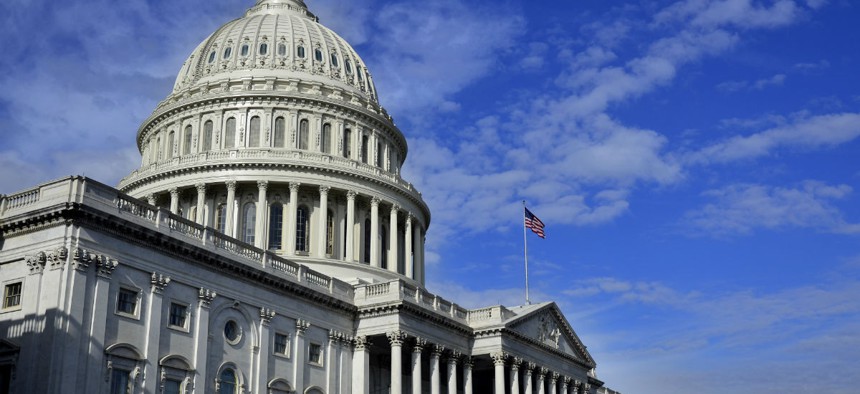
By Lane V. Erickson / Shutterstock.com
Civilian Pay Raise Advances, TSP Prepares More Changes
A weekly roundup of pay and benefits news.
A House panel on Tuesday advanced legislation that would provide civilian federal employees an average 3.1% pay increase next year, which if enacted would override President Trump’s proposal to freeze pay in 2020.
The language authorizing the pay increase is included in the fiscal 2020 Financial Services and General Government appropriations bill, which advanced out of the House Appropriations Committee by a 30-21 vote Tuesday evening.
The bill would provide $24.9 billion in discretionary spending, including funding increases for the Internal Revenue Service and the Small Business Administration. It would block the Trump administration from implementing its plan to merge the Office of Personnel Management with the General Services Administration.
In a statement following the vote, National Treasury Employees Union National President Tony Reardon said the pay raise and the various funding increases are sorely needed. He also applauded the committee’s vote in a separate funding bill that, among other things, would authorize a hiring surge at Customs and Border Protection.
“Improving pay for all frontline federal workers and alleviating the staffing crisis at the ports of entry are two major developments from Capitol Hill that will resonate across the country,” Reardon said. “And, an increase in funding for the IRS is welcome news for taxpayers still dealing with changes to the tax laws and in need of trained employees who can help.”
The bill now goes to the House floor for a final vote. The Senate will then take up its version. So far the upper chamber has not acted on any spending legislation.
Meanwhile, the agency responsible for administering the federal government’s 401(k)-style retirement savings program announced to participants last week that it will increase the default contribution rate for new federal employees next year.
Currently, new federal hires are automatically enrolled in the Thrift Savings Plan at a contribution rate of 3%. Employees then can adjust it to be higher or lower as they wish.
According to a bulletin for agency TSP representatives issued last week, officials at the Federal Retirement Thrift Investment Board, which administers the program, will increase the default contribution rate when new feds enter the TSP to 5%, which would give participants the maximum employer match.
The change is slated to occur on Oct. 1, 2020. TSP Director of Participant Services Tee Ramos said in the bulletin that the plan will not affect the contribution rates of participants enrolled in the TSP before that date.
The Office of Personnel Management on Monday proposed a series of tweaks to the map that determines the compensation of blue-collar federal workers.
The Federal Wage System governs the wages of federal trade and craft employees depending on where they live. A proposed rule published in the Federal Register seeks to expand existing wage areas in some locations under the nonappropriated fund FWS, and to contract others.
“These changes are necessary because NAF FWS employees are now working in these locations, but the locations are not currently defined in NAF wage areas,” the proposal stated. “In addition, OPM is proposing to remove [other places] because there are no longer NAF FWS employees working in these locations.”
The proposal would make the following changes: Greene County, Mo., would join the Leavenworth-Jackson-Johnson, Kan., wage area; Lucas County, Ohio, would join Macomb, Mich.; Mayaguez, Puerto Rico, would join Guaynabo-San Juan, Puerto Rico; and Ceiba, Isabela, Toa Baja and Vieques, Puerto Rico, and the U.S. Virgin Islands of St. Croix and St. Thomas all would be removed from the Guaynabo-San Juan wage area.
Comments regarding the proposed changes are due July 10.







